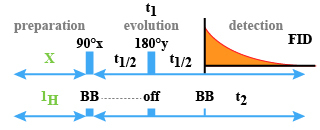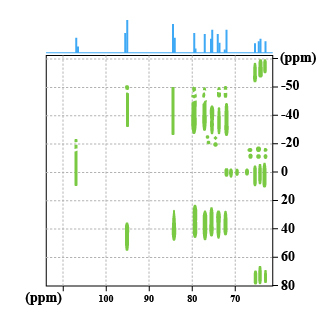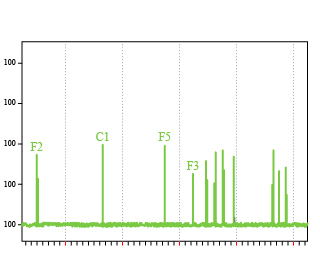The heteronuclear 2D J-resolved pulse sequence
In this experiment we observe the coupling J between the X nuclei
 and the protons which are bound to them (Fig. 27). A coupled normal 1D spectrum XH may be very difficult to explain. This is due to the
intercrossing of the multiplets[1]. For simplifying the spectra, we will spread the coupling data in the
and the protons which are bound to them (Fig. 27). A coupled normal 1D spectrum XH may be very difficult to explain. This is due to the
intercrossing of the multiplets[1]. For simplifying the spectra, we will spread the coupling data in the
 dimension and the informations arising from the chemical shifts in the
dimension and the informations arising from the chemical shifts in the
 dimension.
dimension.

The results are given for the saccharine (Fig. 29). The
 carbon (108 ppm) is a quaternary one because we may observe only one spot devoided of coupling. The
carbon (108 ppm) is a quaternary one because we may observe only one spot devoided of coupling. The
 carbon (95 ppm) is a CH because there are two correlation spots. Moreover, the coupling constant between this
carbon (95 ppm) is a CH because there are two correlation spots. Moreover, the coupling constant between this
 and this
and this
 is of 80 Hz approximately (Spectrum 13 and 14).
is of 80 Hz approximately (Spectrum 13 and 14).


The Heteronuclear correlation of chemical shifts in inverse detection.
